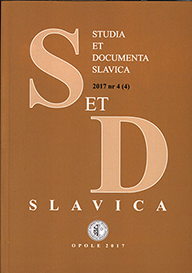O pojmowaniu „rozwiązłości” w czasach przedchrześcijańskich: zjawisko prostytucji sakralnej
On the Understanding of “Promiscuity” in the Pre-Christian Times: The Phenomenon of Sacred Prostitution
Author(s): Maria KrysztofiakSubject(s): History, Ancient World, Theology and Religion
Published by: Uniwersytet Opolski
Keywords: sacred prostitution; religious prostitution; ritual prostitution; sacred prostitutes; holy harlots
Summary/Abstract: The article presents the phenomenon of sacred prostitution which was characteristic of many ancient cultures and religions throughout the world. It shows a few of the most important issues connected with the sacred prostitution (also called religious or ritual): its origins (the cult of deities of love and fertility, typical of the pre-Christian cultures); its forms (one-time prostitution as an act of sacrificing one’s virginity or one-time sacrifice of a woman who was no longer a virgin, and constant prostitution practiced by priestesses or temple prostitutes); its main purposes (unification with deity, making a tribute to deity, pledge of the fertility of men, earth and animals by re-enactment of archetypical act of hieros gamos, the divine marriage). The article also analyses the religious anatomy of the phenomenon, basing on the thesis of Mircea Eliade; shows examples of sacred prostitution, taken mainly from The Golden Bough, the canonic work of Sir James George Frazer, and F.S. Pierre Dufour’s History of Prostitution; discusses the taboo of women’s blood on the basis of Jean-Paul Roux’s works; mentions the historical change in the meaning of the word “virgin” applying to Edward Whitmont’s statements; brings up controversies over the judgment of sacred prostitution as a historical phenomenon, referring to Edward Whitmont’s and Georg Baudler’s standpoints.
Journal: Studia et Documenta Slavica
- Issue Year: 10/2019
- Issue No: 4
- Page Range: 57-69
- Page Count: 13
- Language: Polish

